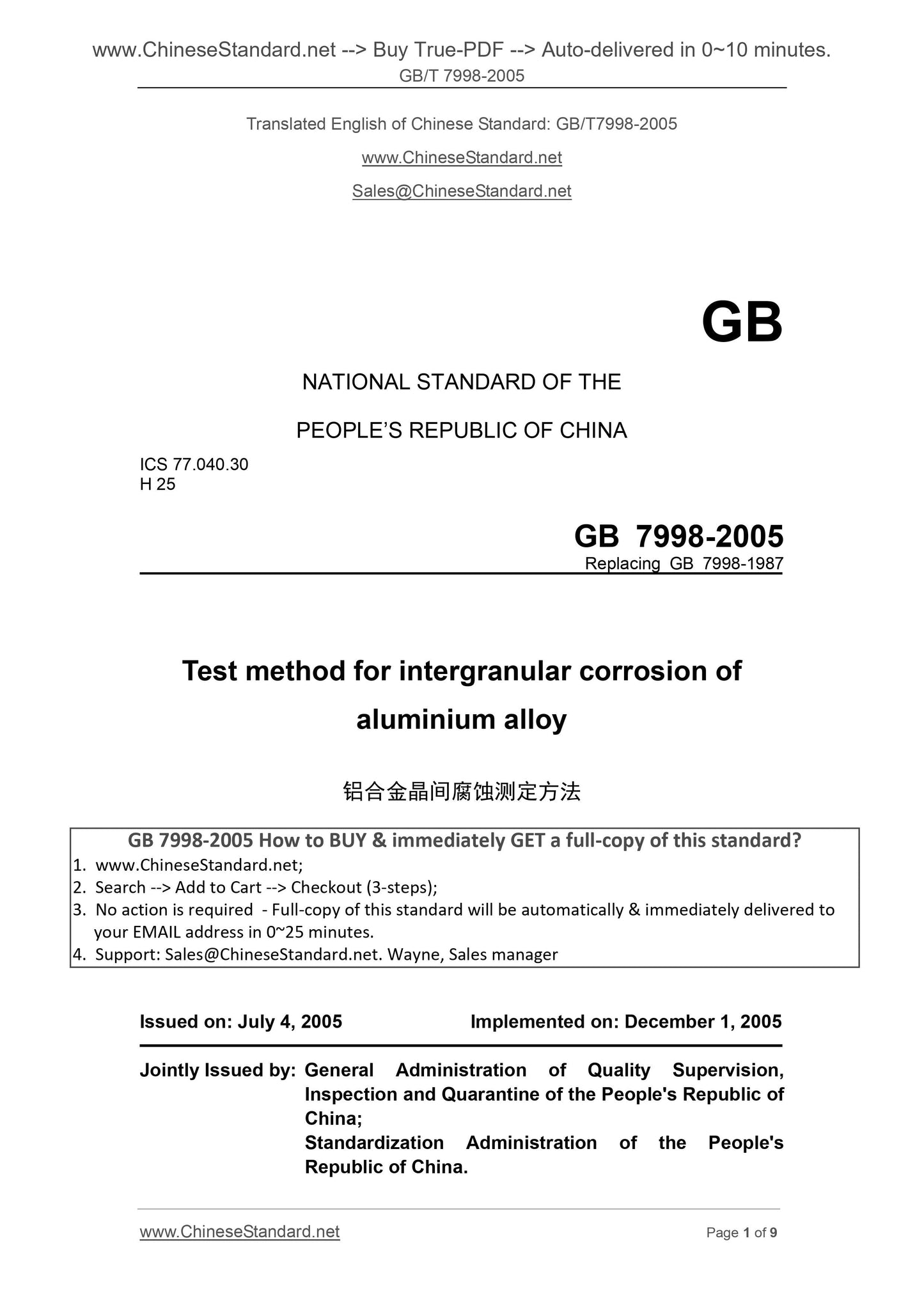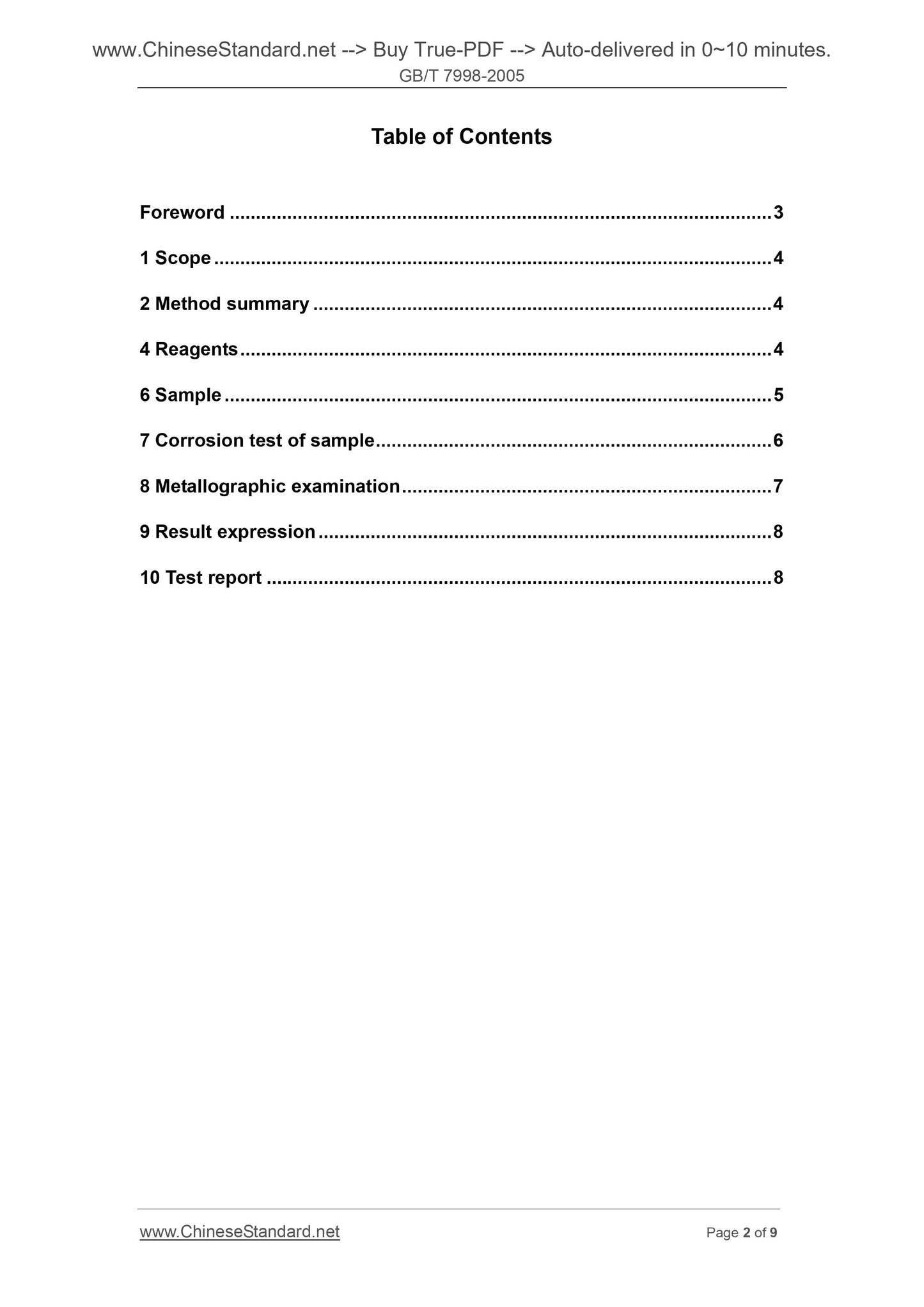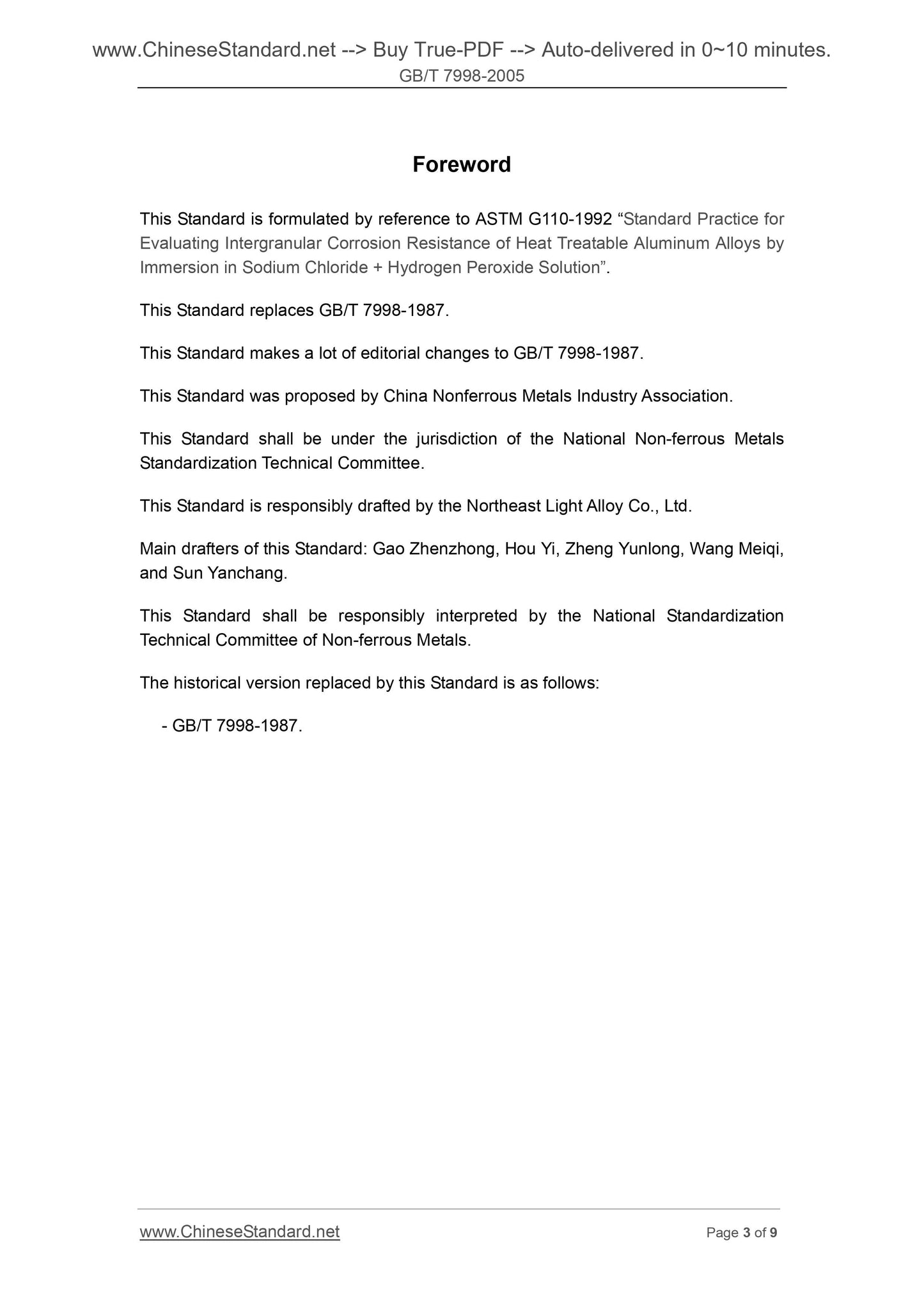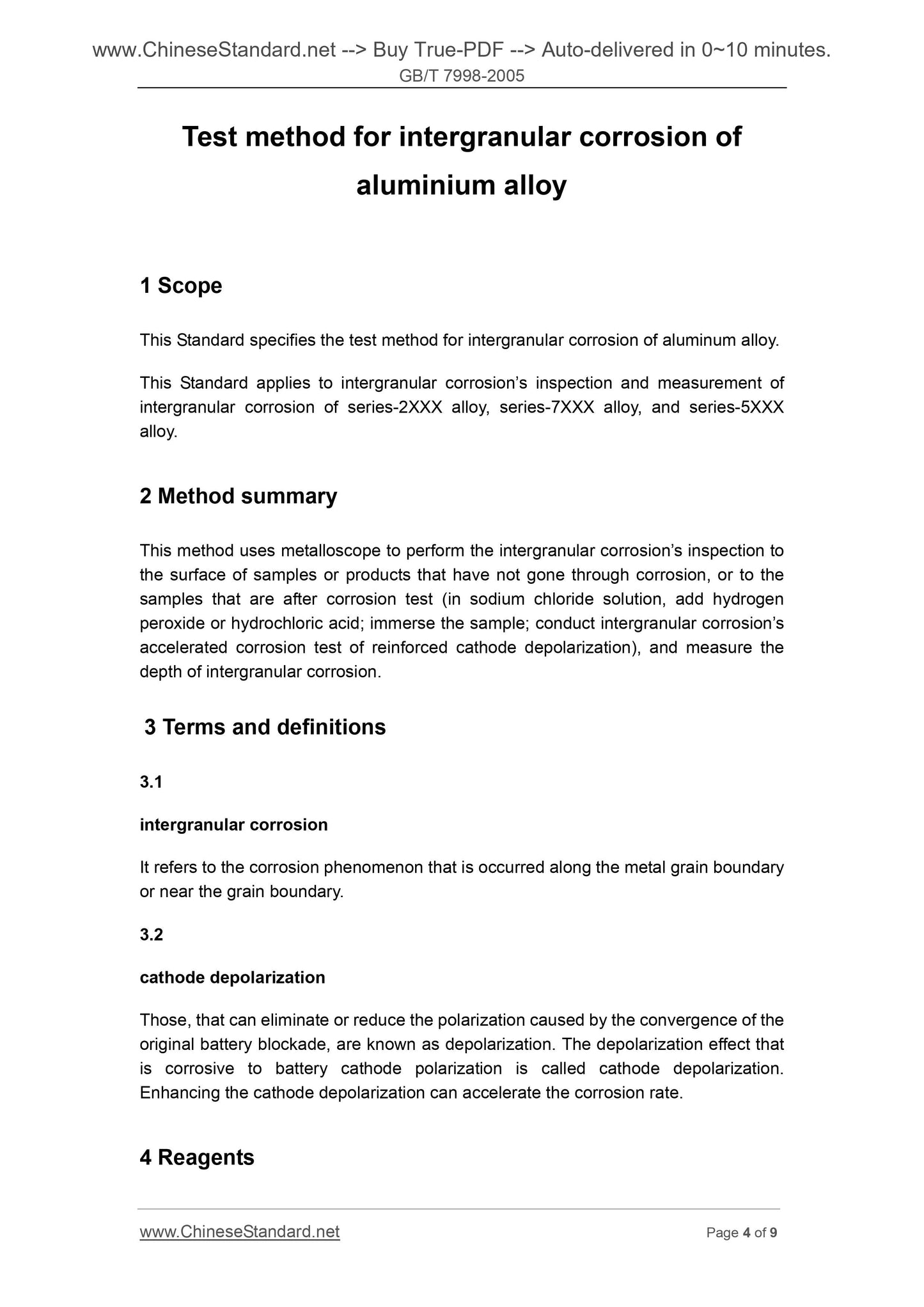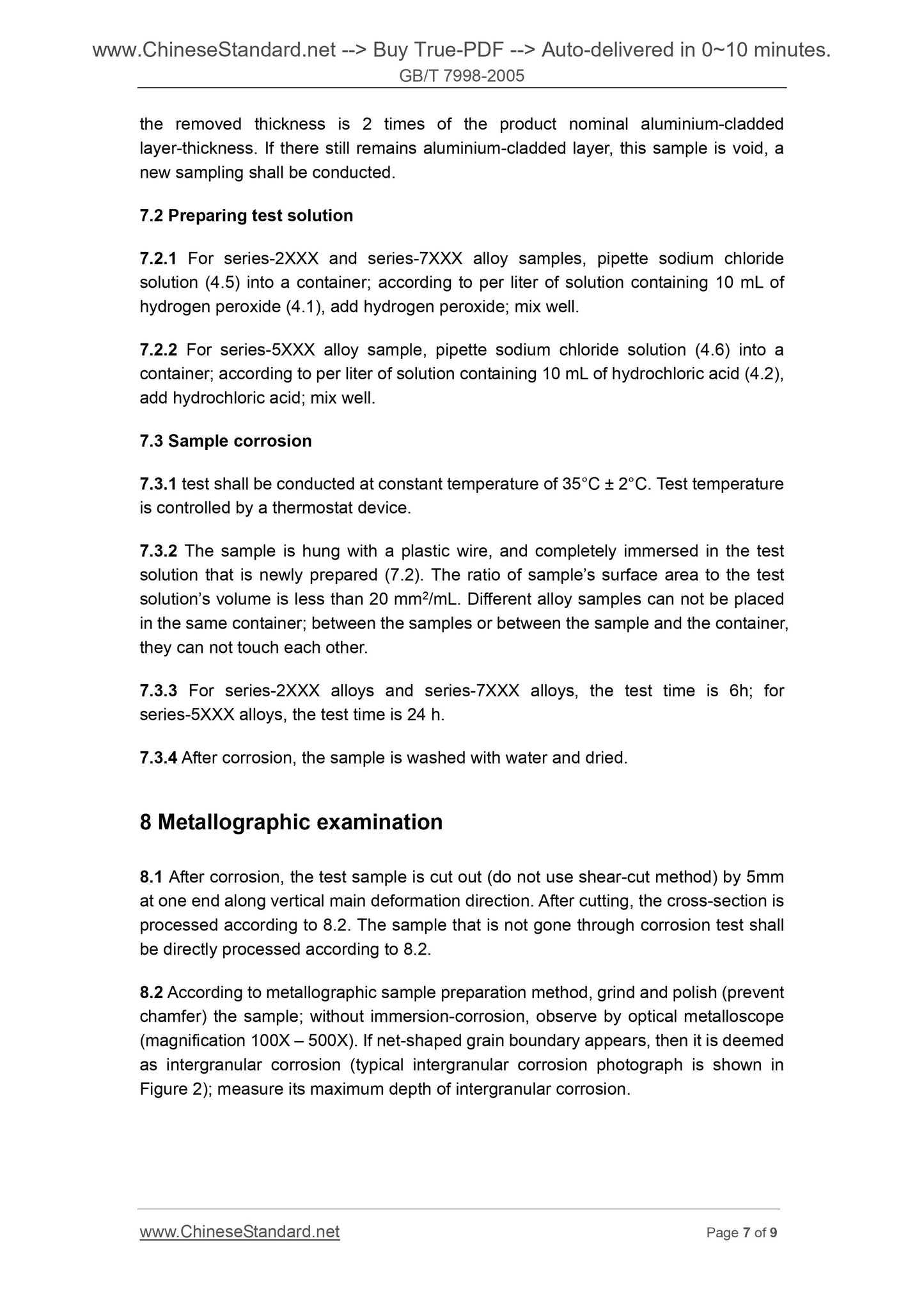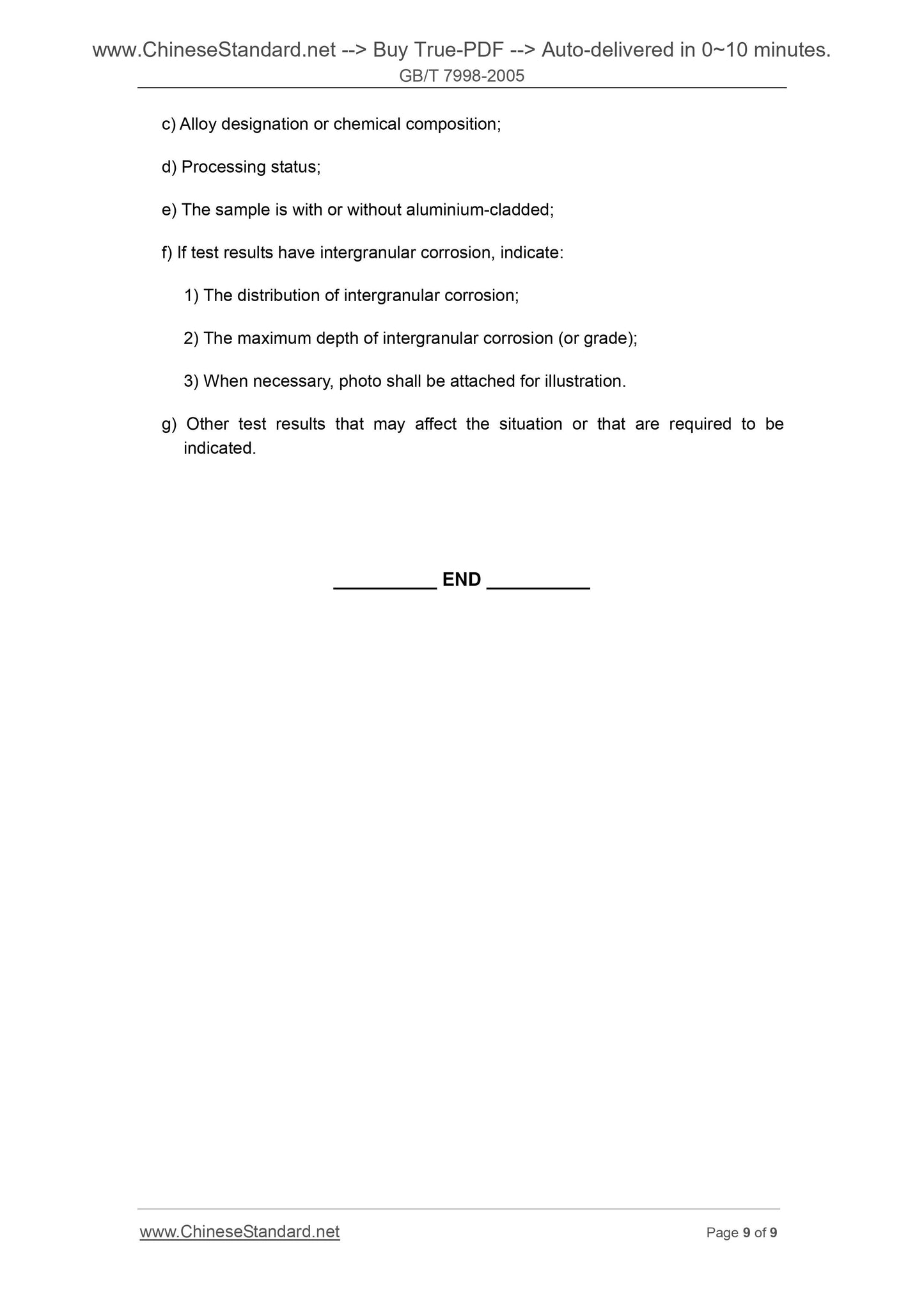1
/
of
6
PayPal, credit cards. Download editable-PDF and invoice in 1 second!
GB/T 7998-2005 English PDF (GB/T7998-2005)
GB/T 7998-2005 English PDF (GB/T7998-2005)
Regular price
$90.00
Regular price
Sale price
$90.00
Unit price
/
per
Shipping calculated at checkout.
Couldn't load pickup availability
GB/T 7998-2005: Test method for intergranular corrosion of aluminium alloy
Delivery: 9 seconds. Download (and Email) true-PDF + Invoice.Get Quotation: Click GB/T 7998-2005 (Self-service in 1-minute)
Newer / historical versions: GB/T 7998-2005
Preview True-PDF
Scope
This Standard specifies the test method for intergranular corrosion of aluminum alloy.This Standard applies to intergranular corrosion’s inspection and measurement of
intergranular corrosion of series-2XXX alloy, series-7XXX alloy, and series-5XXX
alloy.
Basic Data
| Standard ID | GB/T 7998-2005 (GB/T7998-2005) |
| Description (Translated English) | Test method for intergranular corrosion of aluminium alloy |
| Sector / Industry | National Standard (Recommended) |
| Classification of Chinese Standard | H25 |
| Classification of International Standard | 77.040.30 |
| Word Count Estimation | 7,739 |
| Date of Issue | 2005-07-04 |
| Date of Implementation | 2005-12-01 |
| Older Standard (superseded by this standard) | GB/T 7998-1987 |
| Regulation (derived from) | Announcement of Newly Approved National Standards No. 10 of 2005 (No. 84 overall) |
| Issuing agency(ies) | General Administration of Quality Supervision, Inspection and Quarantine of the People Republic of China, China National Standardization Administration Committee |
| Summary | This standard specifies: intergranular corrosion between aluminum Determination. This standard applies to: 2 �� �� �� series, 7 �� �� �� series alloys and 5 �� �� �� alloys processed products intergranular corrosion inspection and measurement. |
Share
